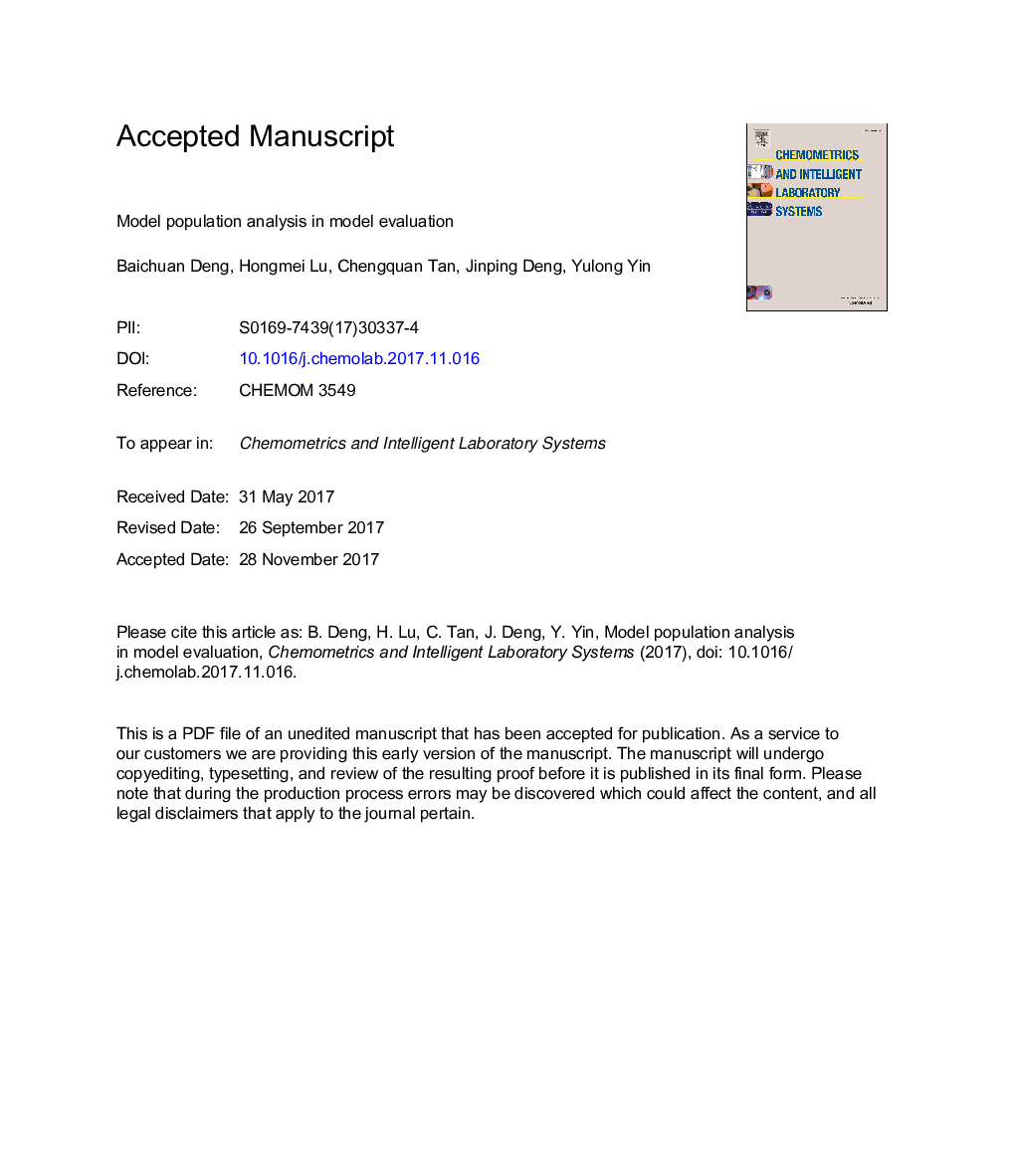| Article ID | Journal | Published Year | Pages | File Type |
|---|---|---|---|---|
| 7562407 | Chemometrics and Intelligent Laboratory Systems | 2018 | 21 Pages |
Abstract
Model evaluation plays a central role in chemical modeling. Model population analysis (MPA), a general framework for designing new types of chemometrics algorithms, has shown its advantage in the field of model evaluation. The core idea of MPA is to statistically analyze the outputs of randomly generated sub-models to extract interesting information from the data. One of the most obvious characteristics of MPA-based methods is that they use multiple models instead of a single model for model evaluation. In this review, we described the concept of MPA, and then discussed the application of MPA in model evaluation, including the relationship between MPA and cross-validation, model comparison, randomization tests, model stability, variable importance and sum of rank differences. Finally, we prospected the potential application of MPA in model evaluation.
Related Topics
Physical Sciences and Engineering
Chemistry
Analytical Chemistry
Authors
Baichuan Deng, Hongmei Lu, Chengquan Tan, Jinping Deng, Yulong Yin,
